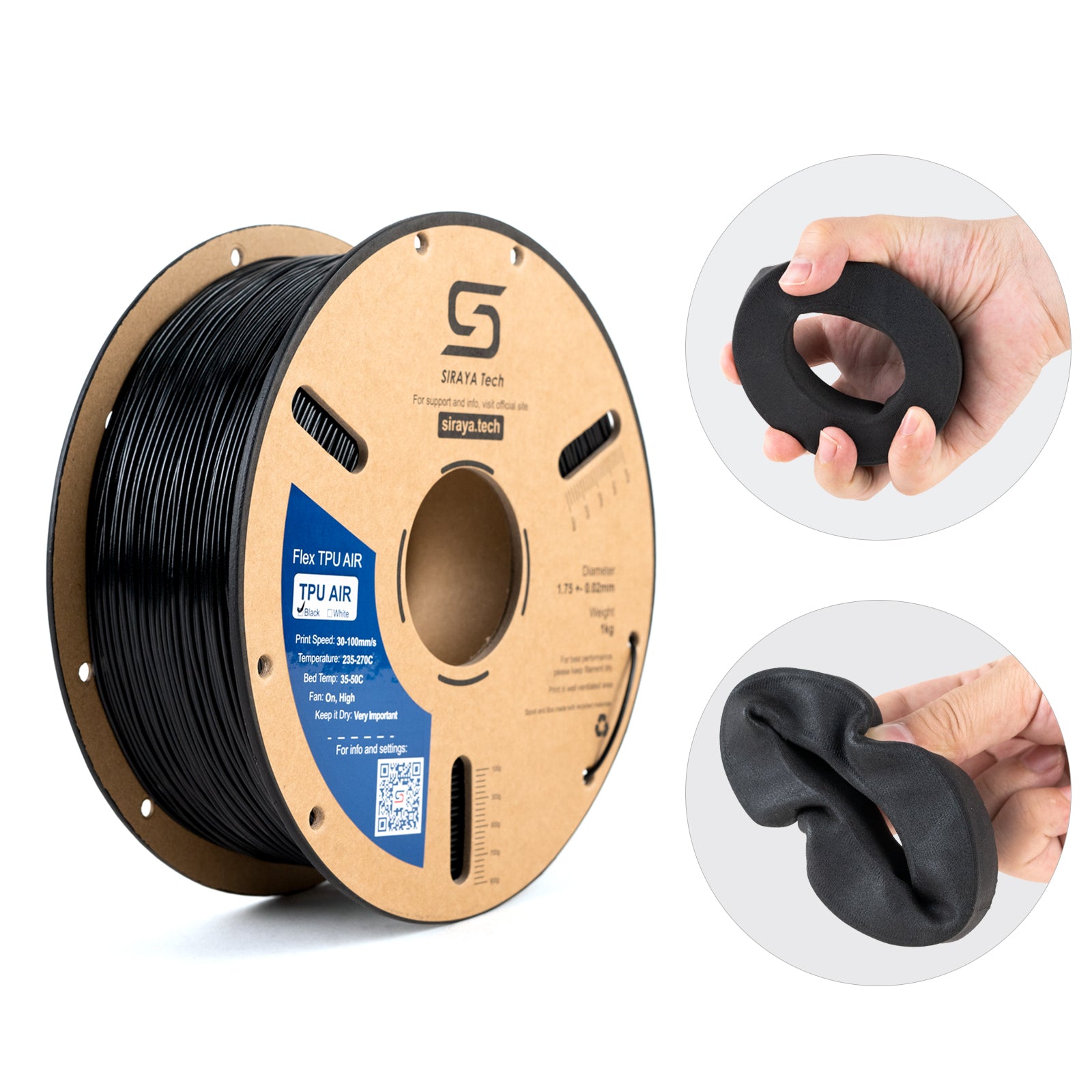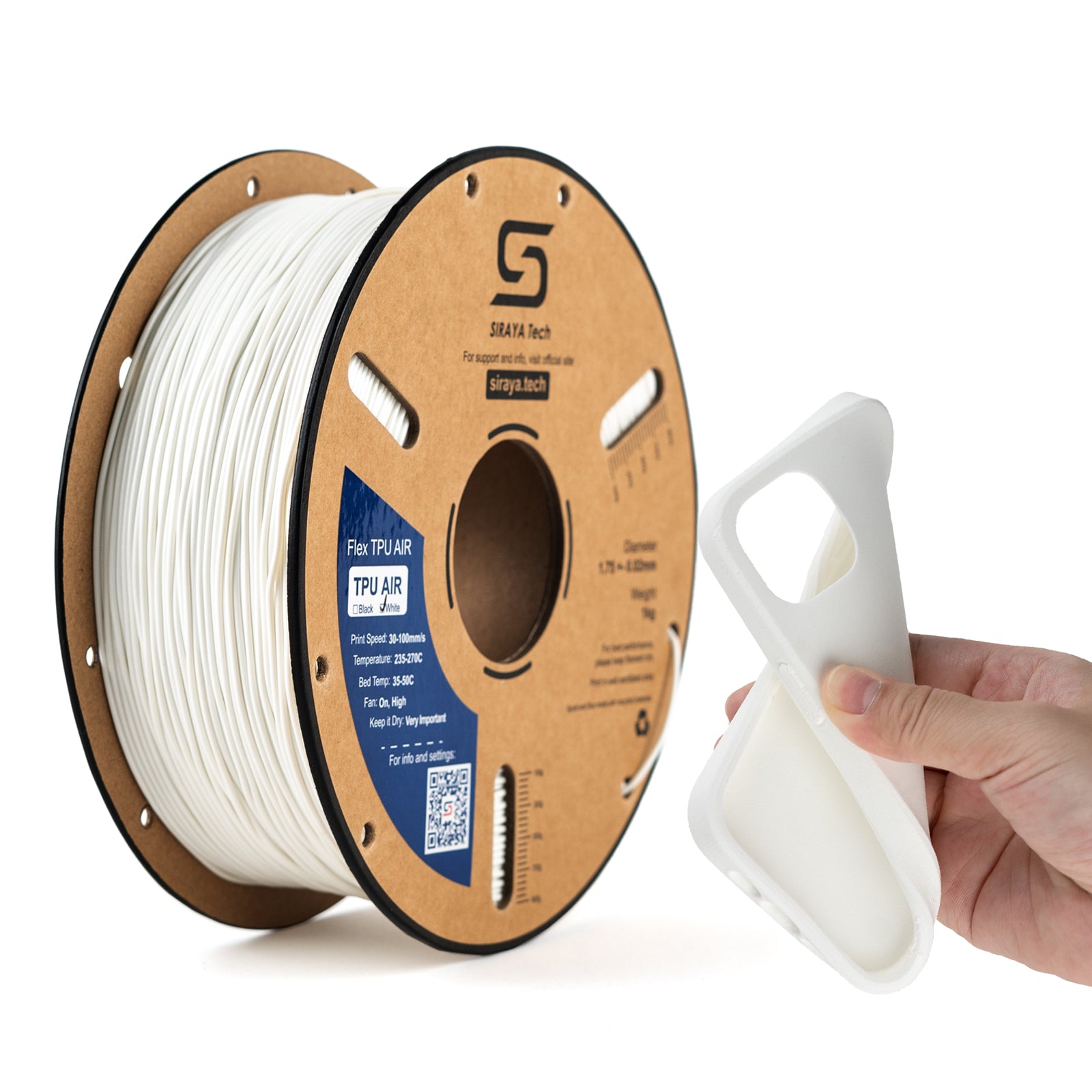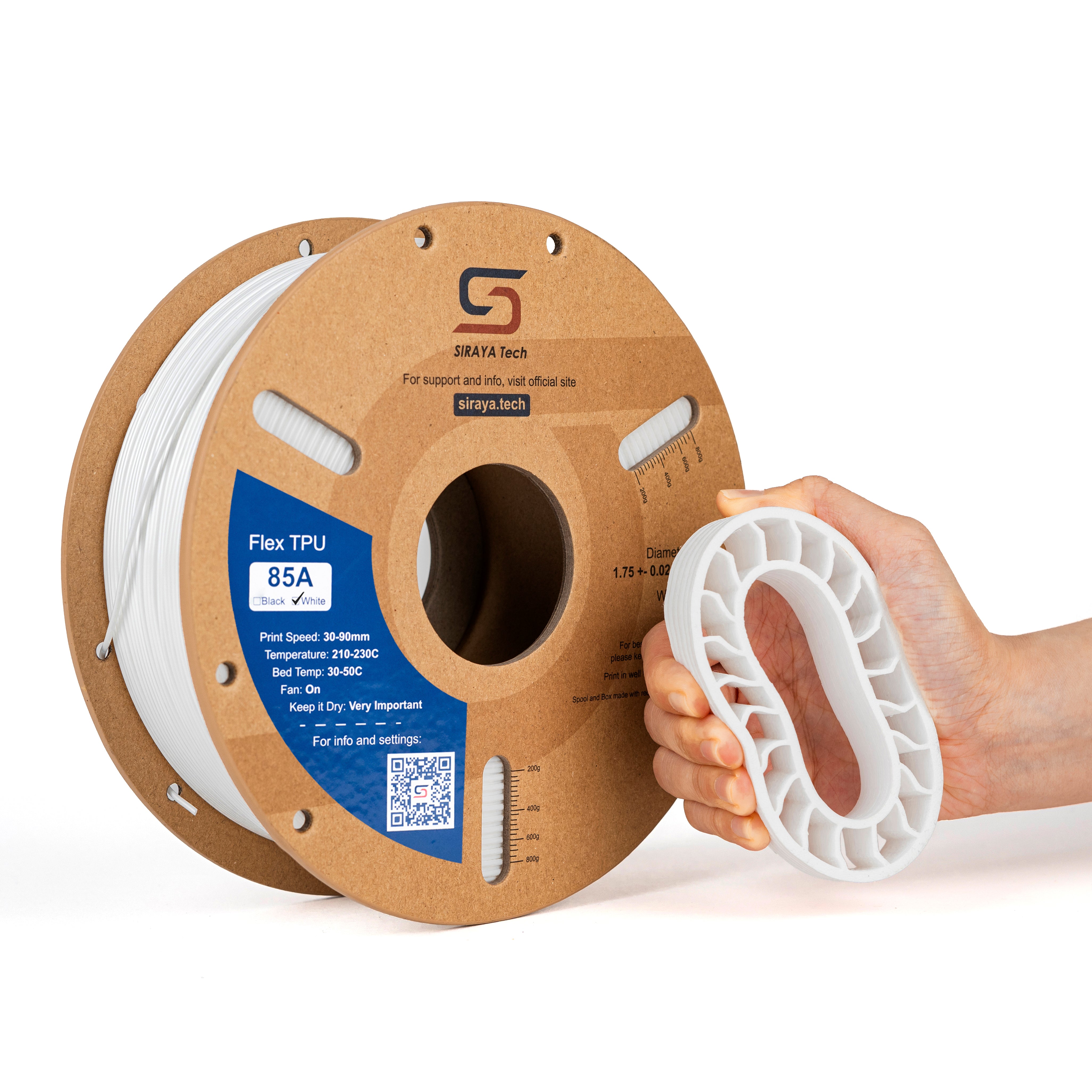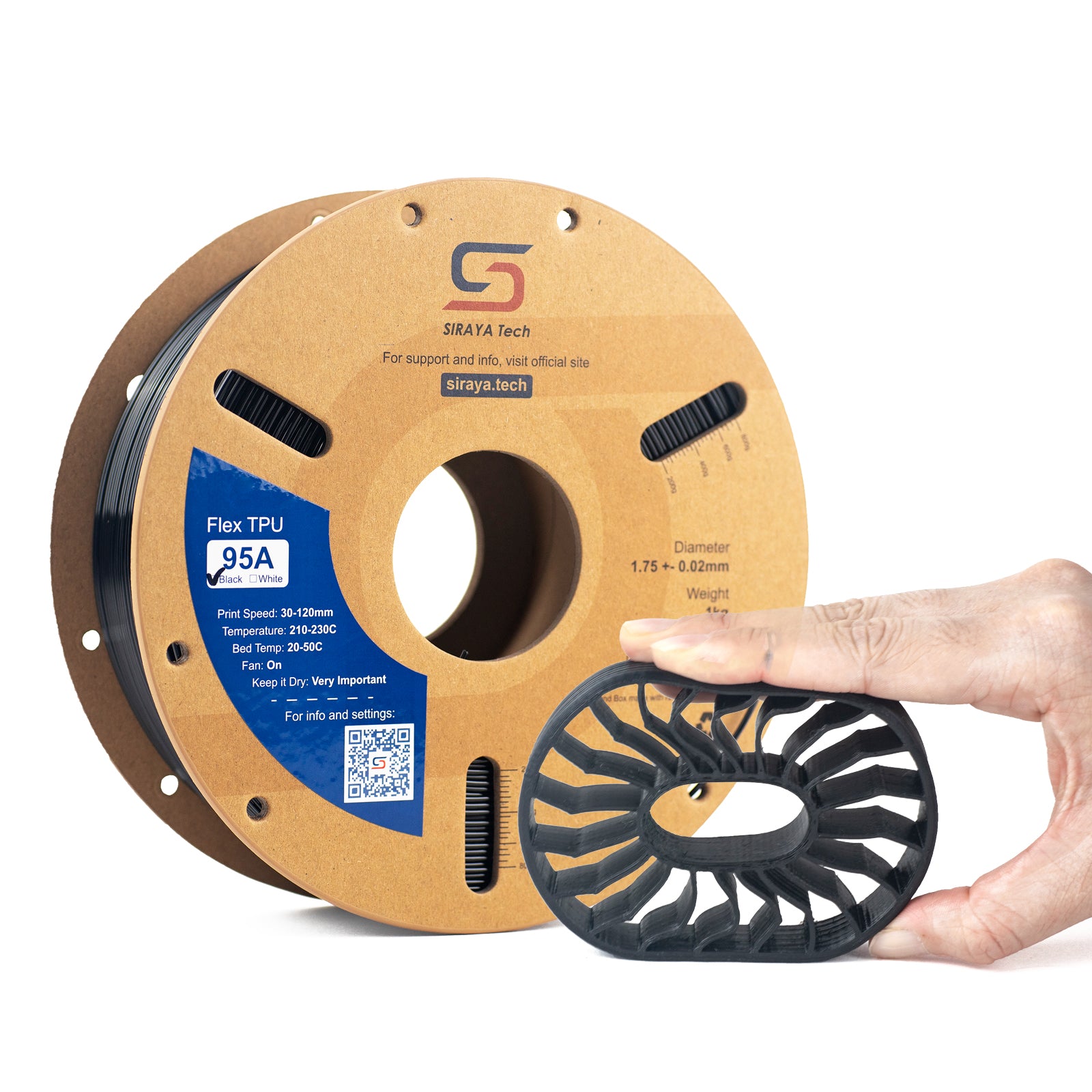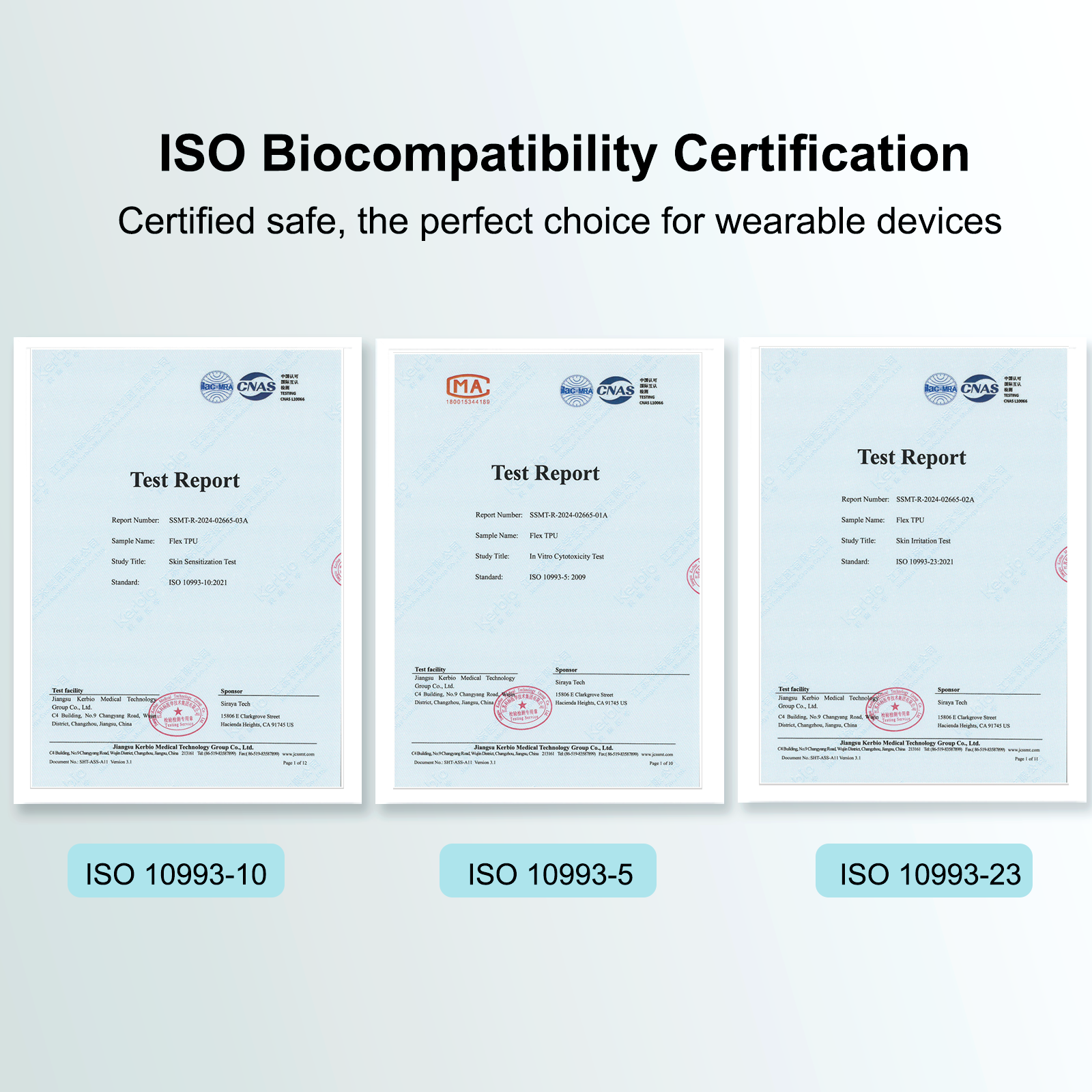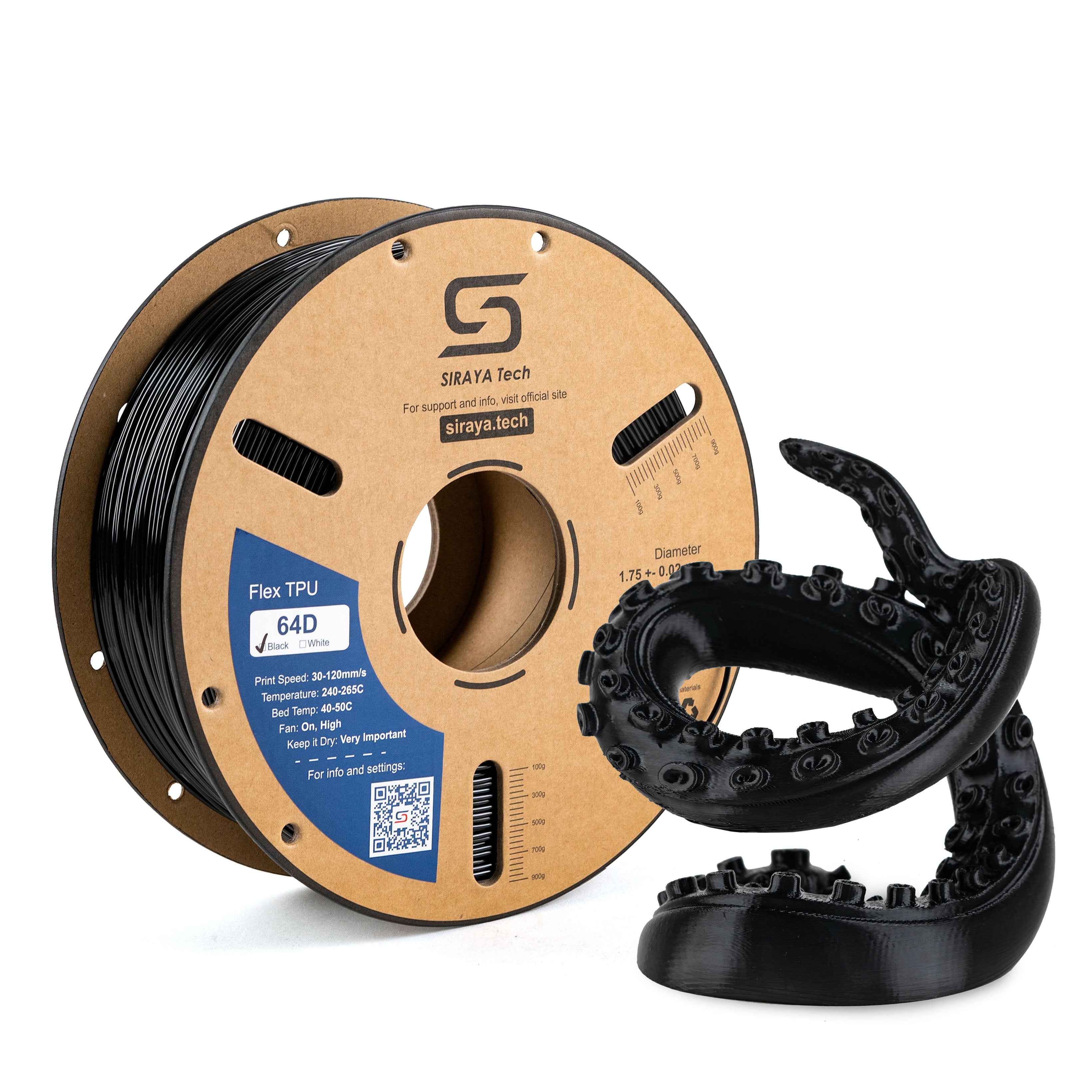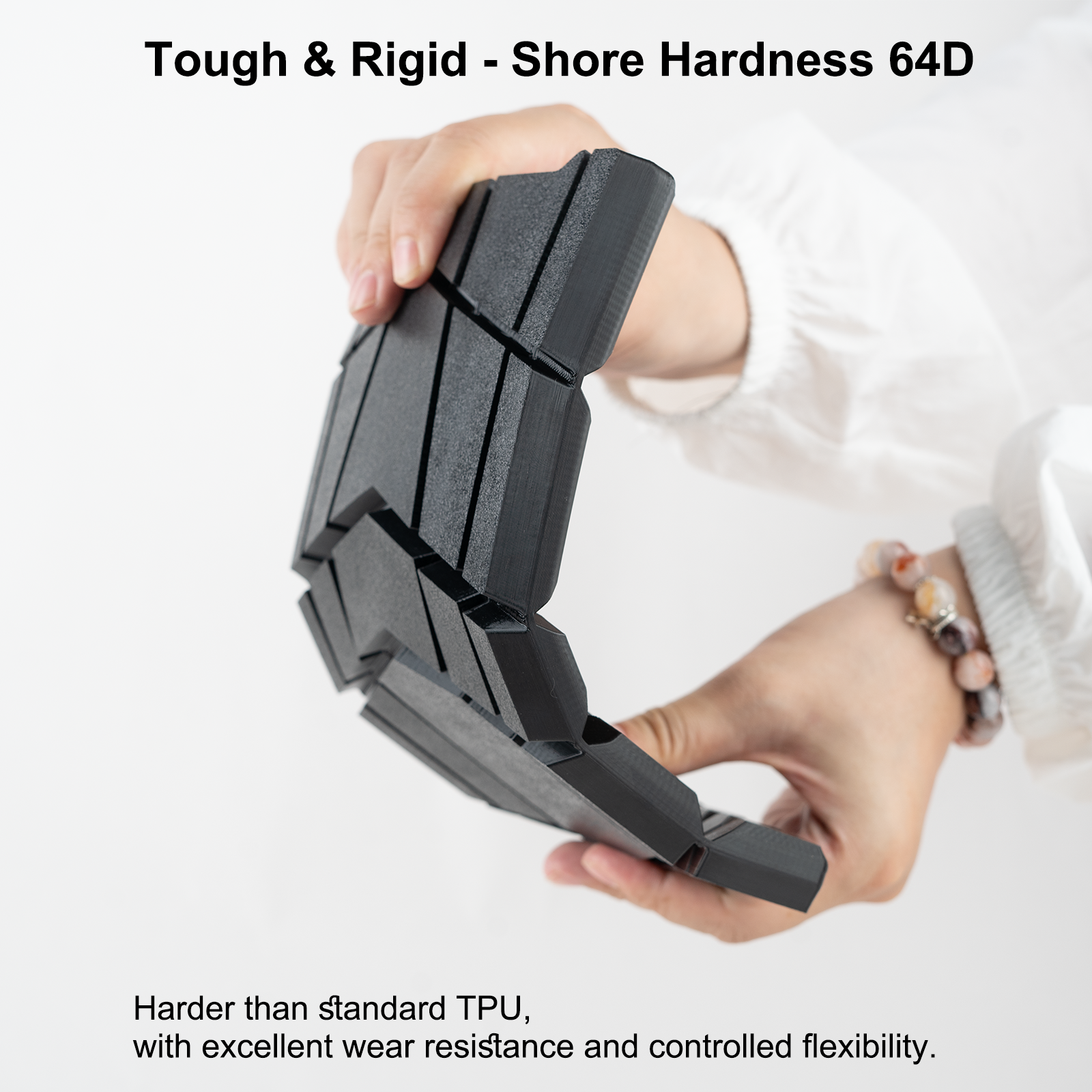Recently viewed
Siraya TPU filament is made for prints that need to bend, flex, and bounce back without breaking.
With different hardness levels and finishes, TPU gives you the freedom to design parts that are strong, elastic, and ready for real-world use.
Whether you’re making wearables, grips, or shock-absorbing parts, TPU filament delivers the balance of toughness and flexibility you need.
Why TPU Filament Is Great for Everyday 3D Printing
TPU filament is perfect for projects that need to handle stress while staying elastic. It bends, compresses, and rebounds, making it a go-to choice for functional parts.
- ✅ Strong enough to take repeated use
- ✅ Flexible without tearing
- ✅ Rubber-like feel for comfort
Elasticity of TPU Filament in 3D Printing
One of the best things about TPU is how it keeps its shape. After stretching or squeezing, it quickly snaps back into place, so your parts stay reliable even with daily wear.
- ✅ Rebounds after bending
- ✅ Keeps form over time
- ✅ Great for grips, seals, and protective covers
Comfort and Durability With the Best TPU Filament
TPU filament balances strength with a soft touch. You can create parts that are tough enough for impact but still pleasant to handle.
- ✅ High resistance to wear and tear
- ✅ Smooth or textured finishes
- ✅ Soft feel for ergonomic designs
Flexible Strength Without Extra Bulk
TPU filament is designed to be tough yet not overly heavy, making it a smart choice for parts that need both flexibility and durability. Its balance of softness and strength means you can create functional prints without adding unnecessary weight.
- ✅ Strong but not bulky
- ✅ Keeps elasticity and toughness
- ✅ Ideal for wearables, grips, and lightweight protective parts
3D Printing With TPU Filament Made Easy
Siraya TPU filaments are tuned for consistent extrusion and fewer clogs. With the right setup, you can enjoy stable printing and reliable results every time.
- ✅ Works best with direct drive printers
- ✅ Stable flow across hardness levels
- ✅ Reduced risk of jams and failed prints
Ready to bring your designs to life with flexibility and strength? Shop Siraya TPU filament today and start printing parts that bend without breaking.
More Materials to Explore
- ✨ Flex TPU Filament for 3D Printing – TPU blends in multiple hardness levels for versatile flexible printing.
- ✨ Fibreheart ASA Filament Family – UV-stable ASA blends designed for outdoor and weather-resistant parts.
- ✨ Engineering Resin – Durable resins made for functional, impact-resistant prints.
- ✨ 3D Model Resin – High-detail resins perfect for models, miniatures, and artistic projects.
Frequently Asked Questions on TPU Filament
Is TPU better than PLA?
Yes, TPU is better than PLA when flexibility and durability matter. PLA is rigid and brittle, while TPU bends and rebounds without breaking. For parts that need to handle stress or movement, TPU is the stronger choice.
What is the disadvantage of TPU?
The main disadvantage of TPU is that it can be harder to print than rigid filaments. It requires slower speeds and the right printer setup to avoid clogs or stringing. Also, it’s not as stiff as PLA or PETG, so it isn’t ideal for structural parts.
Why is TPU so hard to print?
TPU is soft and flexible, which makes it harder for the extruder to push through consistently. If the filament path isn’t direct, it can buckle or jam. Using a direct drive extruder and slower print speeds helps solve this issue.
Does TPU filament need a heated bed?
Yes, a heated bed is recommended for TPU filament. It helps the first layer stick better and reduces warping during printing. Most TPU prints work well with a bed temperature between 40°C and 60°C.
Is TPU or PETG better?
It depends on the project. TPU is better for flexible, shock-absorbing parts, while PETG is stronger, stiffer, and more heat-resistant. If you need elasticity, choose TPU; if you need rigidity with toughness, PETG is the better option.

